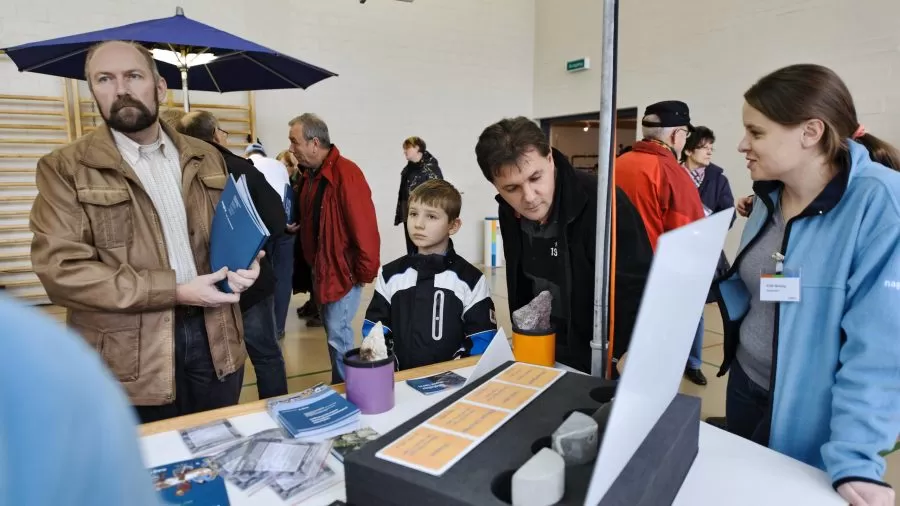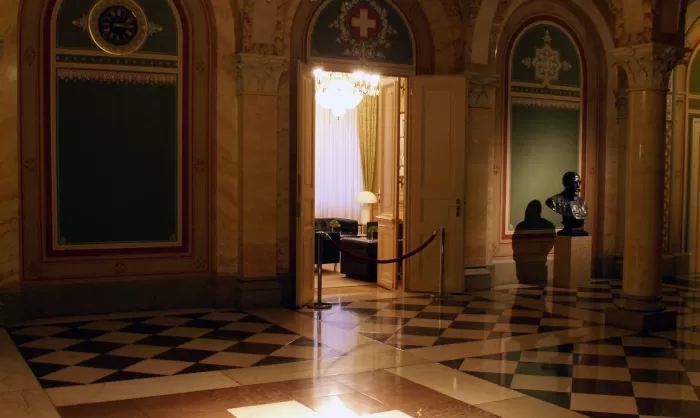

The Swiss Nuclear Energy Act stipulates that the producers of radioactive waste are also responsible for its disposal. On 4th December 1972, all the radioactive waste producers come together to found Nagra: the National Cooperative for the Disposal of Radioactive Waste. In 1977, a separate Nagra office is established in Baden and the physicist Hans Issler is elected CEO.


Which sites are suitable for deep geological repositories for high-level radioactive waste? To answer this question, Nagra launches a geological investigation programme in Northern Switzerland in 1980. The first borehole is started on 11th October 1982 in Böttstein (Canton Aargau).

In 1990, Canton Nidwalden adopts a constitutional initiative that calls for the construction of an exploratory drift to be approved by the cantonal assembly. This means that it is the population that has the vote on a potential repository in Wellenberg.


Nagra proposes Wellenberg (Canton Nidwalden) as a site for a deep geological repository for low- and intermediate-level waste. It is one of four potential sites. One year later, the members of the Nagra cooperative found GNW: the Cooperative for Nuclear Waste Management Wellenberg, based in Wolfenschiessen.

In 1995, the "Wellenberg" project is rejected 52 percent of the voters in a cantonal referendum.


In 1995, the "Wellenberg" project is rejected 52 percent of the voters in a cantonal referendum.

The Federal Council approves the demonstration of disposal feasibility (the so-called Entsorgungsnachweis) for high-level waste using the example of the Zürcher Weinland. This officially confirms that deep geological disposal is possible in principle in Switzerland. Three aspects are fulfilled: siting demonstration, construction feasibility and the demonstration of long-term safety.

Start of Stage 1 of the Sectoral Plan for Deep Geological Repositories (SGT): six geological siting regions in Switzerland are identified that are considered suitable for a deep geological repository from a safety perspective. The Federal Office of Energy publishes these on 6th November. The corresponding Sectoral Plan is approved by the Federal Council.

The Federal Council approves the results of Stage 1, thus confirming the selection of the six suitable siting regions.

Potential construction plans: at a media conference organised by the Swiss Federal Office of Energy, Nagra announces which siting areas are suitable for surface facilities.

The Federal Council approves Nagra's first Waste Management Programme submitted in 2008. This sets out the fundamental principles to be observed during the planning, construction, operation and closure of a deep geological repository.

Start of Stage 2 of the Sectoral Plan for Deep Geological Repositories: Nagra narrows down the number of potential siting regions identified in Stage 1 and submits its final selection to the Swiss Federal Office of Energy, which also examines how a deep geological repository would affect the economy, environment and society in the selected regions.


In November 2018, the Federal Council approves Stage 2 of the Sectoral Plan. In Stage 3, Nagra is tasked with the in-depth investigation of the three siting regions Jura Ost, Nördlich Lägern and Zürich Nordost. The Federal Council also approves Nagra's second Waste Management Programme submitted in 2016.







No deep geological repository without acceptance: Nagra seeks dialogue with the selected regions. In addition, it concretises and defines the surface infrastructure of the repositories for all three siting regions.

Nagra announces the site for which it intends to prepare a general licence application for a deep geological repository. This includes the siting areas where the surface infrastructure is to be constructed.

Nagra submits a general licence application for a combined repository that will safely contain high-level and low- and intermediate-level waste.

The Federal Council makes the final decision on the site. This also concludes Stage 3 of the Sectoral Plan.

The Swiss Parliament approves the decision of the Federal Council.

Will Swiss voters head to the ballot box? The decision is subject to an optional national referendum.

Mission accomplished: the repository section for low- and intermediate-level waste can go into operation.
High-level waste emplacement has also been completed and monitoring begins.
Safely confined: the main repository is closed and the surface infrastructure dismantled. From now on, the deep geological repository can safely be left to its own devices